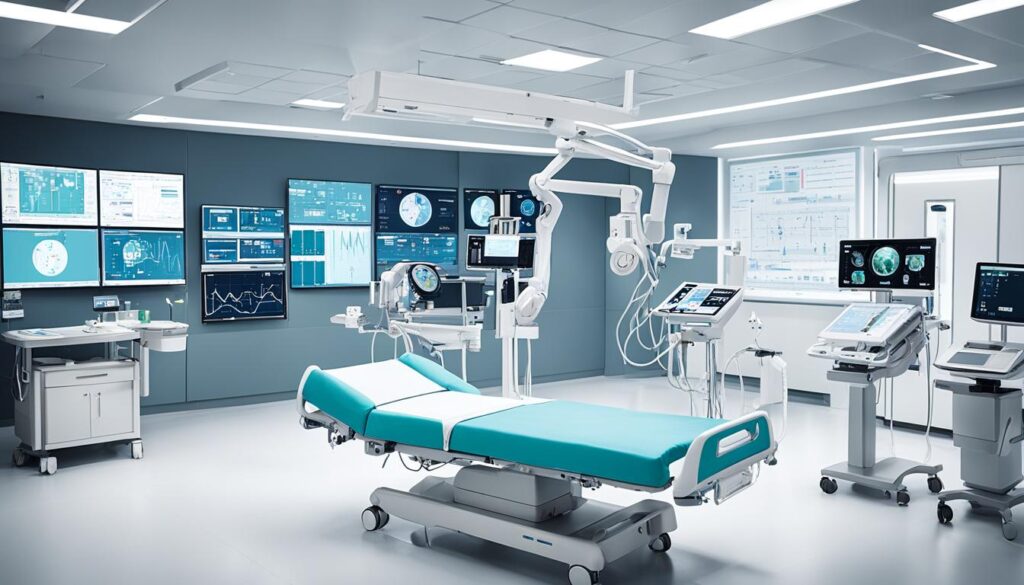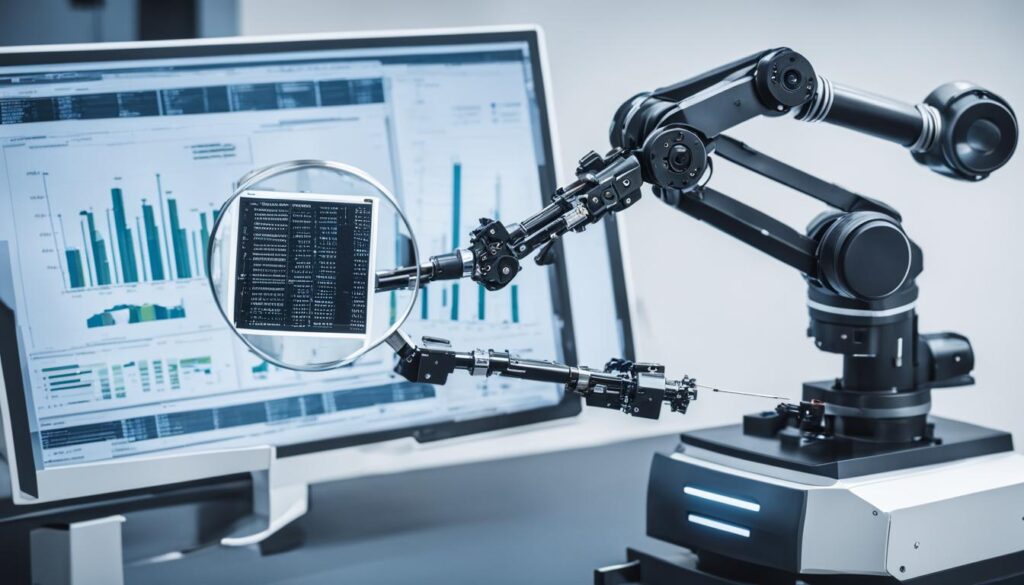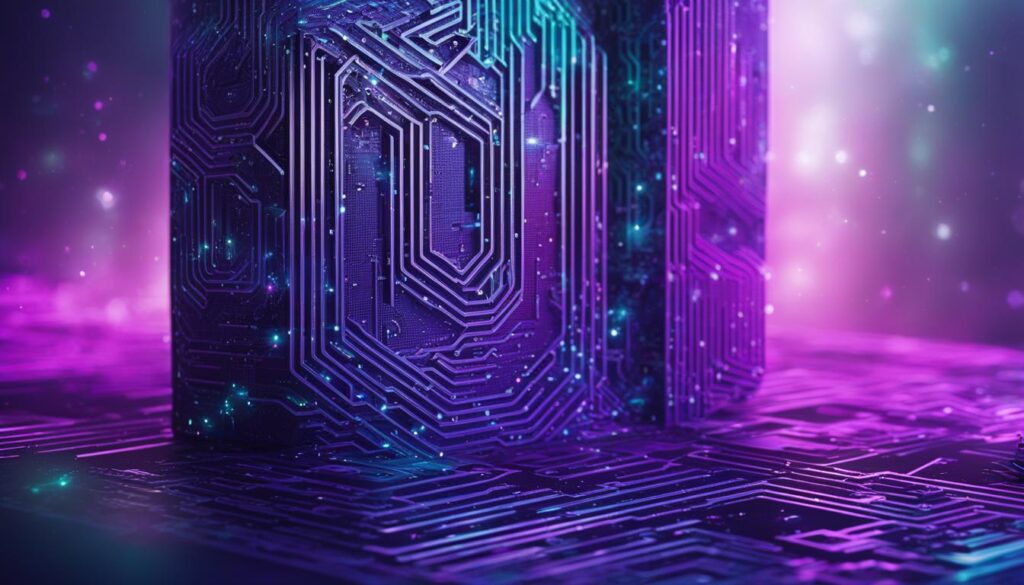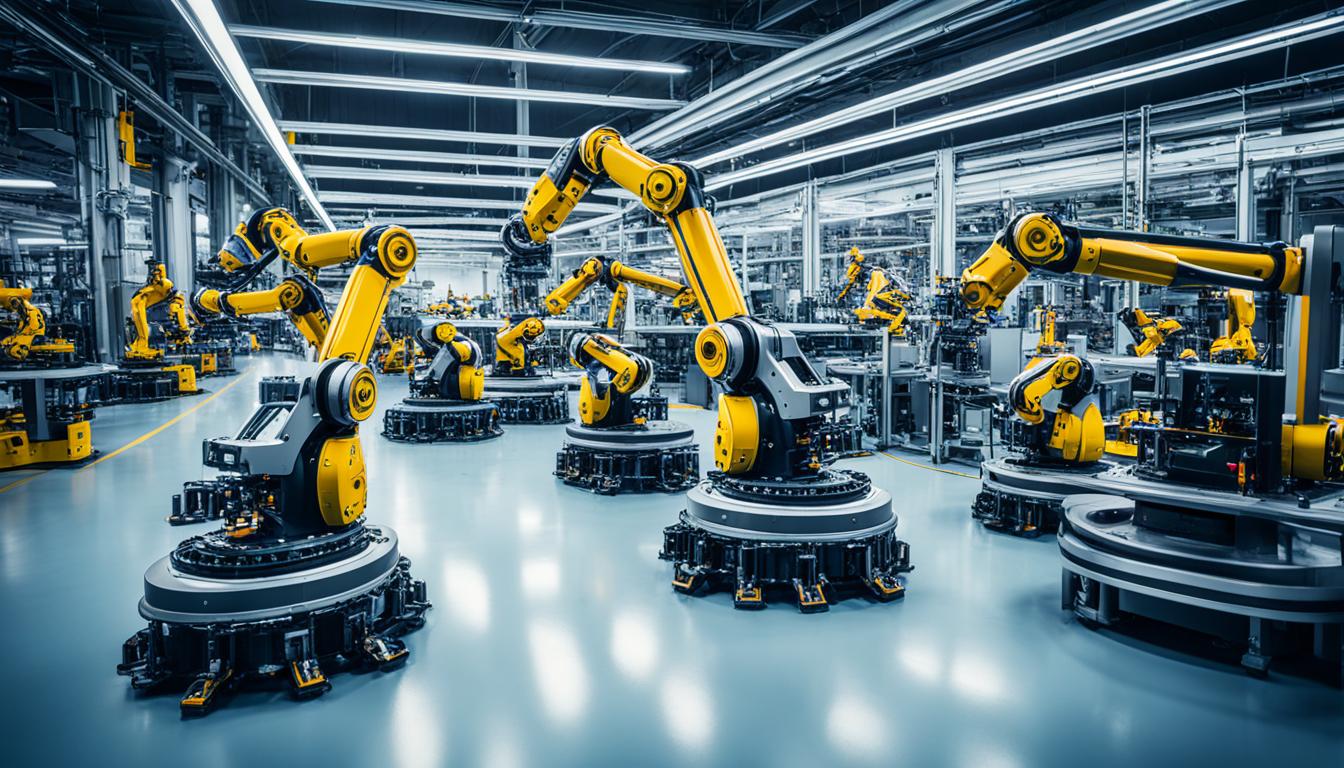Information systems technology is constantly evolving, shaping the digital landscape and driving business innovation. By staying updated on the latest trends, businesses can stay ahead of the competition. Some of the trends to watch out for include advancements in IT infrastructure, the increasing importance of business analytics, the need for effective data management, and the continuous development of software. These trends are shaping the future of information systems technology and will have a significant impact on businesses in the coming years.
Key Takeaways
- Advancements in IT infrastructure are crucial for businesses to adapt to changing technology needs.
- Business analytics play a vital role in driving data-based decision-making and improving performance.
- Effective data management is essential to ensure the accuracy, security, and accessibility of information.
- Continuous software development is necessary to meet evolving user demands and enhance functionality.
- Staying updated on the latest information systems technology trends is crucial for staying competitive in the market.
Artificial Intelligence (AI)
Artificial Intelligence (AI) continues to dominate the realm of emerging technology trends, revolutionizing various industries and driving innovation. One significant development in AI is the rise of generative AI, which has the ability to produce text and replicate human output. However, this advancement has sparked numerous discussions around ethics and its implications for business applications.
Another subset of AI that is gaining traction is explainable AI, which focuses on providing logic and reasoning behind AI-generated outcomes. This helps build transparency and trust in AI systems, making them more accessible and understandable to users and stakeholders.
AI has found its way into different applications, offering valuable solutions in enhancing customer service experiences. By utilizing AI algorithms, businesses can improve issue resolution times, resulting in increased customer satisfaction.
Furthermore, AI plays a pivotal role in marketing automation. It enables businesses to automate repetitive tasks, streamline processes, and optimize marketing campaigns. By leveraging AI in marketing automation, companies can personalize customer experiences, optimize targeting strategies, and drive better engagement and conversions.
AI is not just limited to customer service or marketing automation. Its potential extends to various domains, including software development, where AI algorithms are leveraged to automate routine code generation, reducing development time and improving efficiency.
As AI continues to evolve, it is vital for businesses to adapt and embrace its capabilities. Understanding the potential challenges and harnessing the power of AI can unlock new opportunities and pave the way for advancements across industries.
Internet of Things (IoT)

The Internet of Things (IoT) is a rapidly growing technology trend that involves connected devices and sensors. As the world becomes increasingly interconnected, IoT devices are becoming more prevalent in various industries.
One of the driving factors behind the expansion of IoT devices is the increasing bandwidths provided by 5G networks. This enhanced connectivity allows for seamless communication and data transfer between IoT devices and their respective platforms.
However, with the open interconnectivity capabilities of IoT also comes the need for robust cybersecurity measures. As IoT devices become more widespread, the risk of cyber threats and breaches grows. Ensuring the security of IoT devices and networks has become a top priority for businesses and individuals alike.
Despite the security challenges, the applications of IoT are vast and promising. IoT devices are being used in autonomous transportation systems, where they enable real-time data exchange between vehicles, traffic infrastructure, and control centers. This technology is transforming the transportation industry, optimizing traffic flow, improving safety, and reducing congestion.
In the healthcare sector, IoT has revolutionized the way patient data is collected and monitored. IoT devices allow for remote health monitoring, enabling healthcare professionals to continuously monitor vital signs, collect data, and detect early signs of health issues. This technology improves patient outcomes and enhances the efficiency of healthcare delivery.
Key applications of IoT include:
- Autonomous transportation systems
- Building energy optimization
- Fleet management
- Healthcare monitoring
As IoT continues to advance and evolve, we can expect to see further integration of connected devices in various industries. While ensuring cybersecurity remains a challenge, the opportunities and potential for IoT are immense. By embracing this technology and addressing its security concerns, businesses and individuals can harness the power of IoT to drive efficiency, innovation, and overall digital transformation.
Machine Learning (ML)

Machine Learning (ML) has revolutionized technology by enabling insights from massive amounts of data. This powerful approach has become essential for businesses across industries, providing valuable solutions to complex problems. One of the notable trends in ML is the rise of automated machine learning (AutoML), which streamlines and enhances the ML process.
AutoML eliminates the need for manual intervention in time-consuming tasks such as data cleansing and parameter selection. By automating these processes, AutoML reduces the burden on technical resources and accelerates the ML workflow. This allows organizations to deploy ML models more efficiently and effectively.
ML is being applied in various domains, demonstrating its versatility and impact. In document classification, ML algorithms analyze and categorize large volumes of text, enabling efficient organization and retrieval of information. ML also plays a crucial role in data management, improving the accuracy and speed of data processing, storage, and retrieval.
Fraud detection is another area where ML excels. By training ML models on historical data, organizations can identify patterns and anomalies that signify fraudulent activities. ML algorithms can quickly process large datasets, enabling fast detection and response to potential threats.
Application of Machine Learning:
- Document classification
- Data management
- Fraud detection
| Benefits of Machine Learning | |
|---|---|
| Enhanced accuracy in document classification | Improved data management efficiency |
| Faster fraud detection |
“Machine learning enables organizations to extract valuable insights from vast amounts of data and optimize key processes. With automated machine learning, businesses can unlock the full potential of ML without dedicating extensive resources to manual tasks.”
Machine learning continues to evolve and find new applications in diverse fields. From automating workflows to improving decision-making, ML is transforming the way businesses operate.
5G Networks

5G networks have revolutionized the way we connect and communicate, bringing faster speeds and increased capacity to our devices. With 5G, users can experience lightning-fast downloads, seamless streaming, and enhanced gaming experiences. But the benefits of 5G go beyond just faster internet speeds. Let’s explore how standalone 5G networks are transforming various industries and enabling new capabilities.
Standalone 5G Networks: Enhancing Coverage and Reducing Latency
Standalone 5G networks are the next evolution in wireless technology, providing enhanced coverage and reduced latency compared to previous generations. Unlike non-standalone networks that rely on existing 4G infrastructure, standalone 5G networks are built from the ground up, offering a more robust and reliable network infrastructure.
These standalone networks enable faster data transmission and lower latency, allowing for real-time and mission-critical applications. With reduced latency, industries such as autonomous transportation, remote control of machinery and robotics, and virtual reality can benefit from reliable and instantaneous data exchange.
Remote Control with 5G: Empowering Industries
The advent of standalone 5G networks opens up new possibilities for remote control applications. Industries like manufacturing, agriculture, and logistics can leverage 5G to remotely monitor and control equipment and processes. This enables increased efficiency, reduced downtime, and improved safety.
For example, in manufacturing, 5G-powered remote control systems can facilitate predictive and preventive maintenance, minimizing disruptions and reducing costs. In agriculture, farmers can remotely monitor and control irrigation systems, optimizing water usage and crop yield. Standalone 5G networks also enable remote operation and control of autonomous vehicles and drones, revolutionizing industries such as transportation and logistics.
Inventory Management with 5G: Streamlining Operations
Another significant advantage of 5G networks is its impact on inventory management. With the ability to transmit large amounts of data quickly and reliably, 5G enables more accurate and efficient inventory tracking and management across industries.
By leveraging 5G’s capabilities, businesses can implement real-time inventory tracking systems, reducing errors, minimizing stockouts, and optimizing supply chain operations. This leads to improved productivity, reduced costs, and increased customer satisfaction.
Internet Access with 5G: Connecting the Unconnected
5G networks are poised to bridge the digital divide and provide internet access to underserved and remote areas. With its widespread coverage and improved capacity, 5G has the potential to connect millions of people who currently lack reliable internet access.
By expanding connectivity, 5G enables opportunities for remote work, distance education, telemedicine, and e-commerce in previously underserved communities. This fosters economic growth, empowers individuals with access to resources and information, and promotes digital inclusion.
In conclusion, standalone 5G networks are reshaping industries and revolutionizing the way we live and work. With enhanced coverage, reduced latency, and transformative capabilities such as remote control, streamlined inventory management, and widespread internet access, 5G is a game-changer. As businesses and individuals embrace the power of 5G, we can expect further advancements and innovative applications that will shape our future.
Edge Computing

Edge computing is a rapidly growing technology that is becoming increasingly important as the number of connected devices continues to rise. This approach to data processing brings computing power closer to the edge of the network, reducing latency and improving speeds. By moving the processing closer to the point of data creation, edge computing optimizes the flow of information, enabling real-time decision-making and enhanced user experiences.
In recent years, the growth of edge computing has been fueled by advances in wireless technology, the proliferation of IoT devices, and the increasing demand for low-latency applications. The ability to process data on the edge of the network reduces the burden on centralized data centers and enables efficient and scalable processing closer to where data is generated.
One of the industries where edge computing is making a significant impact is healthcare. With the increasing adoption of connected medical devices and wearables, edge computing is enabling remote monitoring and real-time health data analysis. This technology enhances patient outcomes by providing timely interventions and reducing the need for hospital visits.
Additionally, edge computing plays a crucial role in optimizing the performance of content delivery networks (CDNs). By caching and delivering content from edge locations, CDNs can significantly reduce latency and improve the user experience. This is especially important in applications such as video streaming platforms, where fast content delivery is essential.
Below is a table highlighting some of the key applications and benefits of edge computing:
| Industry | Applications | Benefits |
|---|---|---|
| Healthcare | Remote patient monitoring Real-time health data analysis |
Improved patient outcomes Reduced hospital visits |
| Content Delivery Networks | Fast content delivery Reduced latency |
Improved user experience Efficient network utilization |
| Manufacturing | Real-time process monitoring Quality control |
Increased operational efficiency Reduced downtime |
As the adoption of edge computing continues to grow, we can expect to see its impact across various industries. The optimization of content delivery networks and the healthcare applications of edge computing are just the beginning. This technology has the potential to transform sectors such as manufacturing, transportation, and retail, enabling real-time insights, efficient processes, and improved customer experiences.
Blockchain
![]()
Blockchain technology is revolutionizing industries such as supply chain management and financial services. By providing a secure and transparent digital ledger, blockchain enables improved supply chain tracking and management.
With blockchain in supply chain management, businesses can ensure the authenticity and traceability of products from their origin to the end-user. This technology eliminates the need for manual record-keeping, reducing errors and improving efficiency.
Blockchain in financial services offers enhanced security and transparency for transactions. It enables secure peer-to-peer transactions without the need for intermediary institutions, reducing costs and improving transaction speed.
Blockchain technology has the potential to disrupt traditional supply chain management and financial services by providing a decentralized and incorruptible system.
One of the major benefits of blockchain is improved supply chain tracking. By utilizing blockchain, businesses can track products at every stage of the supply chain with complete transparency. This helps in identifying any inefficiencies, delays, or potential issues, allowing for timely resolutions and improved customer satisfaction.
Blockchain also enhances the protection of intellectual property by providing a tamper-proof record of ownership and transactions. This is particularly beneficial for industries that rely heavily on intellectual property, such as the creative and scientific fields.
Furthermore, blockchain enables secure peer-to-peer transactions, eliminating the need for intermediaries and reducing transaction costs. This has significant implications for financial services, as it streamlines processes and increases accessibility and inclusivity.
The Potential Impact of Blockchain
The adoption of blockchain technology is increasing across industries, and its potential impact is significant. With improved supply chain tracking, supply chain management becomes more efficient, reducing waste and improving overall business operations.
In financial services, blockchain eliminates the need for intermediaries, reducing both costs and transaction times. This opens up opportunities for new business models and financial inclusion, particularly in underserved regions.
As blockchain technology continues to evolve, it is likely to have far-reaching effects. From streamlining supply chains to transforming financial transactions, blockchain has the potential to reshape industries and improve overall business processes.
Benefits of Blockchain Technology
| Industry | Benefits |
|---|---|
| Supply Chain Management |
|
| Financial Services |
|
Blockchain technology has the potential to revolutionize the way businesses operate. By providing secure and transparent transactions, improving supply chain tracking, and enhancing overall efficiency, blockchain is poised to shape the future of various industries.
Spatial Computing

Spatial computing, also known as spatial computing, is a cutting-edge technology that aims to blend the physical and digital realms. By utilizing a range of sensors and connected devices, spatial computing brings immersive 3D interfaces to life, transforming the way we interact with technology and the world around us.
With its ability to create augmented reality (AR) and virtual reality (VR) experiences, spatial computing has vast applications across various industries. Let’s explore some of the areas where this groundbreaking technology is making waves.
VR and AR Applications
One of the key applications of spatial computing is in the realm of VR and AR. With VR, users are transported to completely immersive virtual worlds, offering endless possibilities for gaming, training simulations, and even therapy. AR, on the other hand, overlays digital information onto the real world, enhancing our perception and providing valuable contextual information.
From gaming and entertainment to aviation and healthcare, the applications of VR and AR are extensive. Spatial computing enables the development of realistic and interactive virtual environments, opening up new horizons for experiences and interactions.
Enhanced Virtual Education with Spatial Computing
Spatial computing has the potential to revolutionize the field of education by offering enhanced virtual learning experiences. With spatial computing, students can step into virtual worlds, explore historical landmarks, conduct scientific experiments, and participate in collaborative learning activities, all from the comfort of their own homes.
By leveraging the power of spatial computing, educators can create immersive and engaging educational content that caters to different learning styles, fostering a deeper understanding of complex topics.
Immersive Advertising with Spatial Computing
Spatial computing opens up exciting possibilities for immersive advertising experiences. Brands can leverage this technology to create interactive and engaging advertisements that capture the attention of consumers, leaving a lasting impression.
Whether it’s virtually trying on clothes before making a purchase or experiencing a product in a virtual setting, spatial computing allows for innovative advertising campaigns that connect with consumers on a deeper level.
Exploring the Potential of Spatial Computing
The potential applications of spatial computing extend beyond the realms of education and advertising. This technology has the power to transform business meetings with immersive remote collaboration, streamline design visualization processes, and revolutionize remote assistance and support.
As the field of spatial computing continues to evolve, we can expect to see further advancements and innovative applications in the near future.
Smart Spaces

Smart spaces are revolutionizing the way we interact with our environments. By utilizing advanced technologies such as AI and IoT, smart spaces create intelligent and responsive surroundings that enhance efficiency, safety, and sustainability.
In smart spaces, AI and IoT work hand in hand to optimize energy consumption, automate management tasks, and improve health and safety management. Connected sensors collect and analyze data in real-time, enabling smart systems to make data-driven decisions and adapt to changing conditions.
Energy Consumption Optimization
One of the key benefits of smart spaces is the optimization of energy consumption. By leveraging AI and IoT, buildings can intelligently adjust lighting, heating, and cooling systems based on occupancy and environmental conditions.
The smart sensors monitor factors such as occupancy levels, natural lighting, and temperature, and make adjustments accordingly, resulting in significant energy savings. This not only reduces costs but also contributes to a more sustainable future.
Health and Safety Management
Smart spaces prioritize the well-being of occupants by incorporating advanced health and safety management systems. AI-powered surveillance cameras can monitor and analyze areas for potential hazards or security risks.
In the event of an emergency, AI algorithms can detect and respond to situations rapidly. For example, in case of a fire, sensors can activate automatic alarms, notify emergency services, and guide occupants to safety.
Additionally, smart spaces can integrate real-time health monitoring systems. Wearable devices and sensors can track vital signs, detect falls, or monitor environmental conditions in healthcare facilities, ensuring prompt response and improving patient outcomes.
Benefits of Smart Spaces
| Benefits | Description |
|---|---|
| Energy Consumption Optimization | AI and IoT technologies enable automatic adjustments of lighting, heating, and cooling systems based on occupancy and environmental conditions, resulting in significant energy savings. |
| Health and Safety Management | Smart spaces incorporate advanced surveillance and monitoring systems, ensuring a safe and secure environment. AI algorithms can detect and respond to emergencies promptly, while wearable devices and sensors enable real-time health monitoring. |
| Space Utilization | Smart spaces optimize the utilization of building space by analyzing occupancy patterns and identifying opportunities for efficient space allocation and design. This leads to improved productivity and cost savings. |
| Data-Driven Decision Making | Connected sensors collect and analyze data, providing valuable insights for informed decision-making. This enables businesses and organizations to optimize processes, enhance productivity, and improve overall performance. |
Smart spaces are transforming our living and working environments, creating a future where buildings and infrastructure are interconnected, intelligent, and sustainable. By harnessing the power of AI and IoT, we can unlock the full potential of our surroundings and pave the way for a smarter and more efficient world.
Homomorphic Encryption

Homomorphic encryption is a groundbreaking technology that addresses the critical issue of data privacy. It allows computation on encrypted data without the need for decryption, ensuring that sensitive information remains secure throughout the entire process. This innovative encryption technique has numerous applications in various industries, enabling secure data privacy and the transfer of sensitive information.
One of the key benefits of homomorphic encryption is its ability to enhance data security without disrupting existing business processes. With homomorphic encryption, organizations can perform computations on encrypted data without compromising privacy, making it ideal for scenarios where secure data processing is essential.
One important application of homomorphic encryption is in the secure transfer of sensitive information. By applying homomorphic encryption techniques, organizations can transmit data securely, protecting it from unauthorized access or interception. This ensures that sensitive information remains confidential and protected during transit.
Moreover, homomorphic encryption plays a significant role in increasing the integrity of the voting process. It allows for secure computation on encrypted votes, ensuring that the privacy and accuracy of the voting system are maintained. This technology has the potential to revolutionize the way elections are conducted, providing a secure and transparent voting infrastructure.
Examples of Secure Data Privacy with Homomorphic Encryption
| Application | Description |
|---|---|
| Secure Transfer of Financial Data | Homomorphic encryption can be utilized to securely transmit financial data, such as banking transactions, ensuring that sensitive information remains protected from unauthorized access. |
| Secure Healthcare Data Sharing | By applying homomorphic encryption techniques, healthcare providers can securely share patient data and collaborate with other medical professionals without compromising data privacy. |
| Confidential Data Analysis | Homomorphic encryption enables organizations to perform confidential data analysis while preserving privacy. This is particularly useful in scenarios where data analysis involves sensitive information. |
Homomorphic encryption also supports the development of secure machine learning models. By allowing computation on encrypted data, organizations can train models on sensitive data without exposing it to potential threats. This enables the development of robust and secure machine learning solutions.
Homomorphic encryption is a game-changing technology that guarantees secure data privacy, making it an essential tool for organizations in an era where data breaches and privacy concerns are rampant.
With its ability to enable secure data privacy and facilitate the secure transfer of sensitive information, homomorphic encryption is revolutionizing the way organizations handle and process data. By leveraging this innovative encryption technique, businesses can enhance data security, protect sensitive information, and ensure the integrity and privacy of their operations.
Conclusion
The field of information systems technology is constantly evolving, offering exciting opportunities for professionals and businesses alike. Staying updated on the emerging technology trends discussed in this article, such as AI, IoT, blockchain, and extended reality, is crucial for success in the ever-changing landscape of the digital world.
By embracing these trends and acquiring the necessary skills, individuals can unlock a world of career opportunities in IT. From developing cutting-edge AI applications to designing secure and efficient IoT networks, the future of technology holds immense potential for growth and innovation.
As businesses continue to invest in the advancement of information systems technology, professionals with expertise in these emerging trends will become increasingly valuable. By staying informed, adapting to new technologies, and honing their skills, IT professionals can position themselves for successful and rewarding careers in a rapidly evolving industry.
Also Refer : Exploring The World Of Business Information Technology
FAQs
Q: What is information systems technology?
A: Information systems technology refers to the study and application of technology in the design, development, and project management of science in information systems. It encompasses various aspects such as hardware, software, databases, networking, and security.
Q: What can I expect from a degree in information systems technology?
A: A degree in information systems technology equips you with the knowledge and skills needed to design, implement, and manage information systems in various organizational settings. It covers areas such as systems analysis, information security, computer networks, and the use of technology in business processes.
Q: How can I request information about an information systems technology program?
A: You can request information about an information systems technology program by contacting the relevant academic department or admissions office at the institution offering the program. They will provide you with details about the curriculum, admission requirements, and application process.
Q: What career opportunities are available with a degree in information systems technology?
A: Graduates with a degree in information systems technology can pursue careers as systems analysts, IT managers, network administrators, database administrators, and cybersecurity specialists. They are also well-equipped for roles in software development, technology consulting, and systems integration.
Q: How does the information systems technology program provide college credit?
A: The information systems technology program may provide college credit through the completion of courses that satisfy the general education state core requirements for degree-seeking students. These courses may cover areas such as science, humanities, and social sciences.
Q: What is the significance of information technology in the field of information systems technology?
A: Information technology plays a crucial role in information systems technology, encompassing the hardware, software, and networking components essential for developing and managing information systems. It includes areas such as operating systems, programming languages, software and hardware, and computer systems.
Q: Can a degree in information systems technology satisfy general education state core requirements?
A: Yes, a degree in information systems technology can satisfy general education state core requirements by offering courses that meet the state’s requirements for science, humanities, and social sciences. This ensures that students receive a well-rounded education in addition to their specialized technology curriculum.
Q: What are the key components of the systems and technology covered in an information systems technology degree program?
A: A degree program in information systems technology covers key components such as computer networks, software development, systems analysis, management of information, and the integration of technology into business processes. It also includes courses related to cybersecurity, database management, and information systems design.
Q: How can an information systems technology degree benefit students?
A: An information systems technology degree can benefit students by providing them with the skills and knowledge needed to pursue careers in technology-related fields. This includes opportunities in IT management, systems analysis, software development, and network administration, as well as preparing them for the evolving demands of the technology industry.
Q: What are the educational prerequisites for enrolling in an information systems technology degree program?
A: The educational prerequisites for enrolling in an information systems technology degree program may vary by institution but generally include a high school diploma or equivalent. Some programs may have specific requirements for coursework in mathematics, science, or technology-related subjects.













